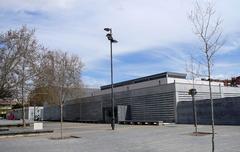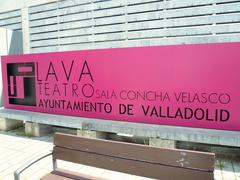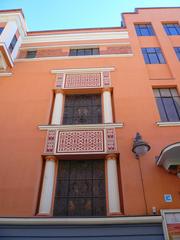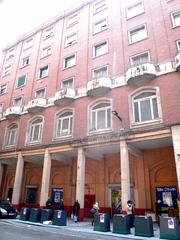Cathedral of Valladolid Visiting Hours, Tickets, and Travel Guide
Date: 03/07/2025
Introduction
Situated in the heart of Valladolid, Spain, the Cathedral of Valladolid (Catedral de Nuestra Señora de la Asunción) is an architectural and cultural icon. Conceived in the late 16th century by Juan de Herrera—renowned for his work on El Escorial—the cathedral embodies the city’s rich religious, civic, and artistic heritage. Though never fully completed due to financial and political challenges, its blend of Renaissance austerity and Baroque ornamentation narrates centuries of evolving styles and historical events. Today, the cathedral stands as both a place of worship and a vibrant center for cultural events, including the famous Semana Santa processions.
This detailed guide covers the cathedral’s history, architectural highlights, significance, practical visitor information, and nearby attractions. For the most current updates, refer to the official Cathedral of Valladolid website and the Valladolid tourism portal. (adventurebackpack.com, guidetoeurope.com, Spain.info)
Table of Contents
- Origins and Foundation
- Architectural Evolution
- Cultural and Religious Significance
- Notable Historical Events
- Visitor Experience
- Nearby Attractions
- Visuals and Multimedia Recommendations
- Frequently Asked Questions (FAQ)
- Additional Resources
- Conclusion and Call to Action
Origins and Foundation
The Cathedral of Valladolid reflects the city’s rise as a political and religious center during the late Middle Ages and the 16th century, when it briefly served as the capital of Spain (adventurebackpack.com). Established as the seat of the Diocese of Valladolid by Pope Clement VIII in 1595, the cathedral was meant to symbolize the Catholic Counter-Reformation’s renewed influence. Construction began in 1589 under Juan de Herrera, whose vision was to create Spain’s most monumental Renaissance cathedral.
Architectural Evolution
Herrera’s Renaissance Vision
Herrera’s design was characterized by a Latin cross plan, three naves, a vast dome, and two prominent towers, all constructed from local limestone. However, progress stalled due to insufficient funds and changing political priorities, leaving only a portion of Herrera’s original plans realized (adventurebackpack.com).
Baroque Additions and Incomplete Structure
During the 17th and 18th centuries, Baroque elements such as ornate chapels and altarpieces were incorporated. Ultimately, only about 40–45% of the initial plan was completed, with a single tower giving the façade its distinctive asymmetry—an enduring symbol of Valladolid’s historical trajectory (guidetoeurope.com, foodandtravel.com).
Interior and Artistic Heritage
Inside, visitors are greeted by a spacious barrel-vaulted nave, a high altar by Juan de Juni, and chapels filled with sculptures and paintings by Gregorio Fernández and other Spanish masters. The walnut choir stalls exemplify the region’s artisanal tradition (guidetoeurope.com).
Cultural and Religious Significance
The cathedral serves as Valladolid’s spiritual heart, hosting major liturgical celebrations like Semana Santa, which draws thousands of visitors (Spain.info). Its bells have marked pivotal city moments for centuries, and the cathedral remains a site for royal ceremonies and civic events, symbolizing Valladolid’s resilience and historical importance.
Notable Historical Events
The cathedral played an important role during Valladolid’s tenure as Spain’s capital in the early 17th century. It suffered damage during the Peninsular War but endured as a community refuge. Restoration efforts in the 19th and 20th centuries preserved its artistic and architectural heritage, and it is now classified as a Bien de Interés Cultural (Asset of Cultural Interest).
Visitor Experience
Visiting Hours and Tickets
-
General Hours:
- Monday to Saturday: 10:00 AM – 1:30 PM and 5:00 PM – 7:00 PM
- Sundays and religious holidays: Morning hours only, often open for Mass
Hours may change during festivals or religious events. Always check the official tourism website before your visit.
-
Admission Fees (2024):
- General entrance: €3
- South Tower access (panoramic views): €12
- Discounts for children, students, and seniors may be available (To Travel Too).
Tickets can be purchased at the entrance or online to avoid queues.
Guided Tours
- Available in Spanish and sometimes English
- Audio guides offered for a small fee
- Tours last 45–60 minutes; recommended for a deeper understanding (To Travel Too)
Accessibility
- The main nave and ground floor are accessible for wheelchair users
- The bell tower requires climbing stairs and is not wheelchair accessible
Best Times to Visit
- Spring (March–May): Pleasant weather and local festivities
- Autumn (September–November): Fewer tourists, comfortable climate
- Semana Santa: Experience the cathedral during Holy Week processions for a unique cultural atmosphere
COVID-19 Protocols
- Masks are recommended indoors
- Hand sanitizing stations available
- Visitor numbers may be limited for social distancing
Practical Tips
- Dress Code: Modest attire recommended; cover shoulders and knees
- Photography: Allowed in most areas; no flash or tripods to preserve the sacred space
- Facilities: Restrooms, gift shop, and nearby cafés and restaurants (Adventure Backpack)
Architectural and Artistic Highlights
- Façade: Renaissance style by Herrera, marked by symmetry and minimalism, with later Baroque embellishments
- Interior: Barrel-vaulted nave, high altar by Juan de Juni, side chapels with notable artworks
- Bell Tower: Climb for panoramic city views; a must for photographers
- Choir Stalls: Finely carved walnut, representing Valladolid’s artistic heritage
Nearby Attractions
- Plaza Mayor: The central square, ideal for local food and people-watching
- University of Valladolid: One of Spain’s oldest academic institutions
- Church of Santa María La Antigua: A short walk away, featuring early Gothic architecture
- National Museum of Sculpture: Renowned for its collection of Spanish religious art
(Live the World, To Travel Too)
Visuals and Multimedia Recommendations
- Include images of the cathedral’s façade, interior, and bell tower with descriptive alt text:
Example: “Cathedral of Valladolid exterior view showcasing Renaissance and Baroque architecture” - Explore virtual tours and interactive maps on official tourism sites
Frequently Asked Questions (FAQ)
Q: What are the Cathedral of Valladolid visiting hours?
A: Monday to Saturday from 10:00 AM to 1:30 PM and 5:00 PM to 7:00 PM; Sundays have limited hours, primarily for Mass.
Q: How much do tickets cost?
A: General admission is €3; tower access is €12. Discounts may apply.
Q: Are guided tours offered?
A: Yes, in Spanish and sometimes English; audio guides available.
Q: Is the cathedral accessible for wheelchair users?
A: The main nave and ground floor are accessible. The bell tower is not.
Q: Can I take photos inside?
A: Yes, but flash and tripods are discouraged.
Additional Resources
- Official Cathedral of Valladolid website
- Valladolid Tourism Portal
- Adventure Backpack Guide
- Guide to Europe
- Spain.info
- To Travel Too
- Live the World
Conclusion
The Cathedral of Valladolid is a testament to the city’s historic significance, architectural ambition, and spiritual vitality. Its unfinished façade and richly decorated interior provide a narrative of aspiration and resilience. Accessible visiting hours, affordable tickets, and engaging guided tours make it a highlight for travelers eager to explore Valladolid’s heritage. Take advantage of its central location to discover surrounding historical sites and immerse yourself in the local culture.
Call to Action
Ready to experience the Cathedral of Valladolid and explore more of Valladolid’s historical treasures? Download the Audiala app for up-to-date visiting hours, ticket bookings, and travel tips. Follow us on social media for the latest updates and exclusive content!
Sources
- adventurebackpack.com
- guidetoeurope.com
- Spain.info
- To Travel Too
- Live the World
- foodandtravel.com
- whattovisitwheretotravel.com




